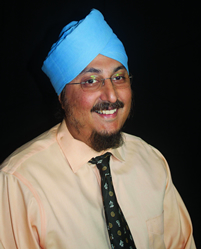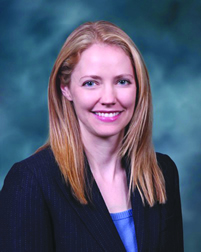As more information is published, the use of ultrasound is evolving and becoming an increasingly important tool in rheumatology practices.
Issues in Ultrasound 2015 on Wednesday morning will focus on ultrasound certification and credentialing, the use of ultrasound in musculoskeletal procedures, and the role of ultrasound in the monitoring of disease activity in rheumatoid arthritis and its possible impact on therapeutic decisions.

“The current tools we have to evaluate patients, however, are not entirely perfect. They allow us to do our jobs, both clinically and in trials, but there is room for improvement,” said Gurjit Kaeley, MD, Professor and Chief of the Division of Rheumatology and Clinical Immunology and Medical Director of the Musculoskeletal Ultrasound Program at the University of Florida College of Medicine-Jacksonville. “Ultrasound offers us another method of evaluation of joints that is more sensitive and may be more precise in some circumstances.”
Dr. Kaeley cited the recent work of researchers at the University of Glasgow in Scotland who looked at the use of ultrasound to evaluate patients with moderate rheumatoid arthritis, defined as a disease activity score in 28 joints, or DAS28, less than 3.2.
“Among their findings, they reported that up to 25 percent of patients were found to have more disease activity than expected, suggesting that we may not be treating our patients with moderate disease adequately based just on clinical indices,” he said. “When the disease activity is higher, you probably don’t need an ultrasound to tell you to be more aggressive with treatment, but it could certainly be valuable in evaluating patients at lower disease activity levels.”
Patients with rheumatoid arthritis who present with nonspecific regional pain may also be appropriate candidates for ultrasound, particularly if the pain is in areas such as the shoulder or ankle where a standard clinical exam might not be sufficient. In situations such as this, Dr. Kaeley said, ultrasound could be useful in determining whether the pain was caused by the disease or a mechanical problem.
Another scenario where ultrasound may be beneficial is as an alternative objective measure when there is global assessment discordance between the patient and physician.
“For instance, a patient may say they feel terrible and report a high CDAI global score of 8, whereas you might examine the patient and not find many swollen joints, and assess them to be about a 4,” he said. “Ultrasound offers a way of objectively looking at the joints and offering the patient some reassurance when it comes to escalating or de-escalating their medications.”
Dr. Kaeley said that when making the decision to de-escalate therapy, ultrasound can be valuable in detecting the presence of persistent Doppler activity, which could be a predictor of future progression of the disease.
“Three recent studies that have looked at this question and suggested that if patients have persistent residual Doppler activity, there is a significant risk that the disease will flare following biologic de-escalation,” he said. “So, if they have a lot of underlying Doppler activity, we would probably advise against de-escalating any of the therapies, but if they have very little activity or it’s in just one joint, then I think we would feel comfortable that they could probably de-escalate without difficulty.”

In another presentation, Catherine Bakewell, MD, a rheumatologist at Intermountain Healthcare in Salt Lake City, will discuss the increasing use of ultrasound in musculoskeletal procedures (MSUS).
“Over the past decade and a half, the use of musculoskeletal ultrasound has emerged throughout Europe, the U.S., Latin America and elsewhere,” Dr. Bakewell said. “The use of MSUS has become so prominent that large physician groups have released consensus statements on its use, including ACR in 2012 and the American Society for Sports Medicine in 2015. Both of these consensus statements cite strong evidence for the use of MSUS procedural guidance.”
Several studies have shown that ultrasound-guided injection (USGI) leads to increased certainty about injection accuracy, as compared to landmark-guided injection (LMGI). Some data suggest that in many, but not all instances, USGI contributes to increased injection efficacy and reduced procedural morbidity, such as procedural pain.
“For example, at the level of the shoulder, two studies with level-one evidence have found that USGI is more efficacious than LMGI, while one study found that efficacy between the two modalities was virtually equal,” Dr. Bakewell said. “At the level of the hip, LMGI are not commonly undertaken, but the comparator here would be fluoroscopically guided injections. In a 2014 study, 49 of 50 patients who had undergone both procedural guidance types preferred MSUS to fluoroscopy, and reported that their average pain score was less.”
When it comes to assessing the cost effectiveness of USGI versus LMGI, more data are needed, Dr. Bakewell said, particularly in light of new billing codes, which included the bundling of arthrocentesis with ultrasound guidance, that went into effect at the beginning of this year. She believes that coding change should lead to a reduction in overall procedural costs relative to LMGI, especially when increased injection efficacy and subsequent decrease in health care utilization are taken into account.
The symposium will also include a presentation by Ralf G. Thiele, MD, RhMSUS, of the University of Rochester Medical Center in New York, who will update attendees on the current status of ultrasound certification/credentialing.


